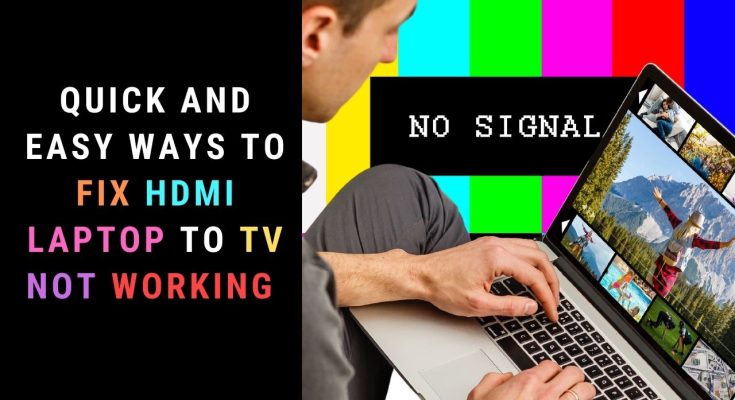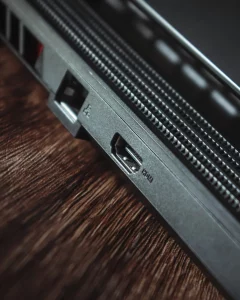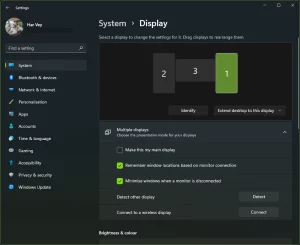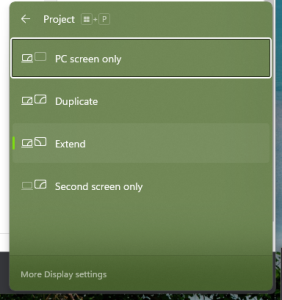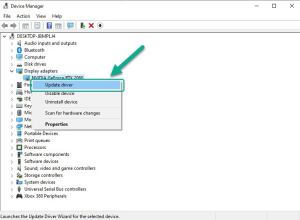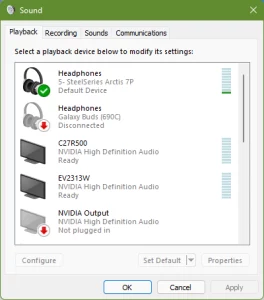The Windows operating system permits the simultaneous use of several displays. If you wish to use the OS with an connected HDMI Monitor, television, you should be able to do so effortlessly. Nonetheless, some individuals may experience difficulties connecting an HDMI Monitor or TV to a PC.
This tip is for you if your Windows PC is having trouble identifying an HDMI Monitor or TV.
How to resolve the Windows HDMI Monitor not recognized issue?
If your Windows 10 or 11 PC cannot recognize an HDMI monitor or TV, you must attempt various solutions to determine which one works.
#1: Restart your PC.
- A simple restart may help resolve this issue.
- It is an essential troubleshooting guide for all Windows-related difficulties you may experience.
- If you have previously rebooted your computer, go to the next step.
#2: Examine the physical connections.
- Additionally, you must confirm that your PC and HDMI Monitor or TV are correctly connected.
- Additionally, you must ensure that the HDMI wires are functional.
- If you have a second HDMI cable, you should test it in case the first one is defective.
- Verify that you are using the correct HDMI port, especially if your monitor or television has numerous ports.
- If you attempt to connect a TV through HDMI, use the TV’s remote for cycling between the inputs or sources.
#3: Manually detect the HDMI Monitor or HDMI TV.
If your PC does not recognize your HDMI Monitor or TV, you may manually verify by clicking the Detect option in the Windows Settings menu. Connecting an older monitor to a Windows 10 or 11 computer is complex, but this generally resolves the issue.
Here is what must be done:
- To launch the Settings app, hit Windows key + I.
- Visit System.
- Choose Display.
- Select Multiple Displays.
- Click the Detect button.
Verify that your computer can now recognize an HDMI TV or HDMI monitor.
#4: Check the Display Output settings.
To resolve Windows’ inability to recognize an HDMI TV or HDMI Monitor, check the Display Output settings. Windows is intended to handle multiple screens and can project the screen in various ways. Try switching between the various projection choices to see if it resolves the issue.
If your Windows computer is unable to recognize the PC screen or HDMI TV, follow these procedures to change projection options:
- Verify that your PC and HDMI TV or HDMI monitor are correctly connected.
- Press the Windows key plus the letter P.
- Select Duplicate.
- If Duplicate fails, try Extend instead.
#5: Install the most recent graphics driver software.
Sometimes, driver software may become damaged or obsolete, causing computers to malfunction. You must ensure that your computer’s graphics driver software is up to date.
It is how it is done:
- Click Start with the right mouse button.
- Select Device Manager from the menu.
- Increase Display Adapters
- Verify whether there are question marks next to Display Adapters.
- Right-click the display adapter and select the Update driver option.
- Click Automatically search for drivers.
It will direct your computer to search the Internet for the most recent graphics driver version. You may also utilize the Microsoft Basic Display Adapter option by selecting Browse my computer for driver software rather than Search automatically for updated driver software. The Microsoft Basic Display Adapter option is only suggested if your computer cannot access the Internet to get the most recent graphics driver.
It is how it is done:
- Click Start with the right mouse button.
- Select Device Manager from the menu.
- Increase Display Adapters
- Verify whether there are question marks next to Display Adapters.
- Right-click the display adapter and select the Update driver option.
- Choose to Search my computer for driver software.
- Select Allow me to choose from a list of drivers on my machine.
- Mark the box next to Display suitable hardware.
- Choose the Microsoft Basic Display Adapter option.
- Select Next.
After installing the drivers, you should restart the computer and recheck the issue of not detecting HDMI Monitor.
#6: Use the hardware troubleshooter.
If upgrading your graphics driver manually does not resolve the issue, you can utilize the built-in troubleshooter.
This tool is created for circumstances like this, so test it out now.
Here is how to employ it:
- Press the Windows key and I on the keyboard.
- Choose System.
- Scroll down to the right side and choose Troubleshoot.
- Choose Other troubleshooting options.
- Click the Run button to begin Video Playback.
- Wait for the System’s diagnostics to complete.
Alternatively, you can use the Control Panel.
- Click the Windows key and type “control panel” on your keyboard.
- Open Control Panel.
- Verify that Small icons are selected in the View by a section on the upper right.
- Locate Troubleshooting and click on it.
- Select View all from the menu on the left.
- Select Video Playback from the menu.
- Wait for the System’s diagnostics to complete.
#7: Verify the default HDMI monitor or HDMI TV set.
Check your System’s HDMI connection. You are likely using the incorrect HDMI Monitor output or device. If you do not notice the HDMI audio device in the list of devices, then it is likely that the HDMI device is not functioning for any reason. It is possible that the associated HDMI cable is unplugged or improperly placed.
To verify, please follow these steps:
- Click the Windows key and type “control panel” on your keyboard.
- Open Control Panel.
- Verify that Small icons are selected in the View by a section on the upper right.
- Locate Sound and choose it.
- Under the Playback tab, locate and choose your HDMI Monitor device.
- If your HDMI device is not shown, verify it is connected to the correct HDMI port.
If your device has several HDMI ports, try connecting it to the other port to see if it resolves the issue.
#8: Use the Intel Graphics Control Panel’s Multiple Displays Operating Mode.
You can forcibly recognize your HDMI device using the Intel Graphics Control Panel program if you are not utilizing a discrete or dedicated GPU such as NVIDIA or AMD.
Here is what must be done:
- Go to your desktop.
- Right-click a space on the desktop and select Graphics Properties.
- Select Basic Mode and press OK when the Intel Graphics and Media Control Panel displays.
- Select Multiple Displays under Display in the Display section.
- Check that Intel Graphics Control Panel recognizes the HDMI TV or HDMI Monitor by selecting the drop-down menu for Operating Mode and confirming that the Intel Graphics Control Panel detects the HDMI TV or monitor.
You should have the option to duplicate or extend the screen if this is detected. You must install the most recent display driver if your computer has an NVIDIA graphics card. Then, install the NVIDIA Control Panel and use it to recognize your HDMI TV or HDMI Monitor manually.
Users of AMD can install the AMD Radeon Settings program to get the same results.
#9: Restoring the System .
If none of the other methods work, you can do a System Restore as a last resort. You will need to use a previously made restore point to resolve the issue of HDMI Monitor still not detecting. It will force the machine to revert to the settings from the restore point.
Note that the System restore will not affect any of your data.
It is how it is done:
- Windows key + R will launch the RUN dialogue box.
- In the RUN box, enter rstrui and press Enter.
- It will launch System Restore.
- Click the Next tab button.
- Check the “Show additional restore points” box.
- Select the restoration point before the occurrence of the issue, and then click the Next tab.
- Could you wait for it to finish?
- After the System Restore procedure is complete, click Finish.
- Restart your System after using System Restore
FAQs
What are the reasons for the Windows HDMI TV or HDMI Monitor not being detected issue?
There are several potential causes for this problem. Common causes include wrong HDMI output settings, obsolete graphics drivers, a faulty HDMI connection or port, and further software problems.
How to fix a Windows PC that does not recognize a second PC.
ALSO SEE: Fix Ping Spikes Permanently (5 Ways)
- If your computer cannot identify multiple screens, there may be a problem with the HDMI ports or any other connections you may be utilizing.
- It is also conceivable that the HDMI connection is defective owing to a damaged cable or that the HDMI Monitor or HDMI TV is not compatible.
See the solutions listed above for a comprehensive list of remedies to this issue.
